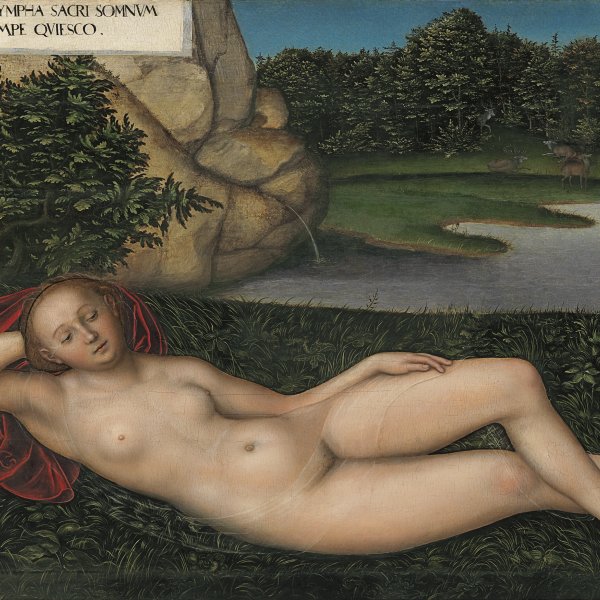Lucas Cranach the Elder
Cranach took his surname from Kronach, his native city in Franconia. He trained in the family workshop, then around 1490 travelled to southern Germany. He then moved to Vienna, where he is documented between 1500 and 1504. There, Cranach associated with the humanistic circles that had grown up around the university. Works from this period include the Portrait of Johannes Cuspinian and his Wife (Winterthur) and The Flight into Egypt (Gemäldegalerie, Berlin). In 1505 Cranach was in Wittenberg, to where he was summoned by the Elector Frederick III as court painter. In 1508 he departed on a diplomatic mission to the court of the Emperor Maximilian in the Low Countries and following his return his work reveals a new softness in the modelling of the figures. Works from this period include Venus and Cupid (Hermitage Museum, St. Petersburg) and The Virgin and Child with a Bunch of Grapes (Museo Thyssen-Bornemisza, Madrid). Cranach spent the following years in Wittenberg until he moved to Augsburg and then to Innsbruck, accompanying the Elector John Frederick of Saxony into exile. In 1552 he moved with the Elector to Weimar, dying there in 1553.
Cranach’s art is linked to the ideas of the Reformation and he produced portraits, religious compositions, prints and drawings. Particularly notable are his series of prints executed between 1505 and 1509. From 1520 Cranach devoted himself more intensively to illustration, producing images for books by the reformers and biblical scenes. He directed an important and flourishing workshop in which his two sons worked. Among Cranach’s most important paintings are the Triptych with the Three Electors (Kunsthalle, Hamburg), The Golden Age (Alte Pinakothek, Munich), his portraits of the Electors and members of the court and his highly individual depictions of Judith, Salome, Venus and nymphs.










